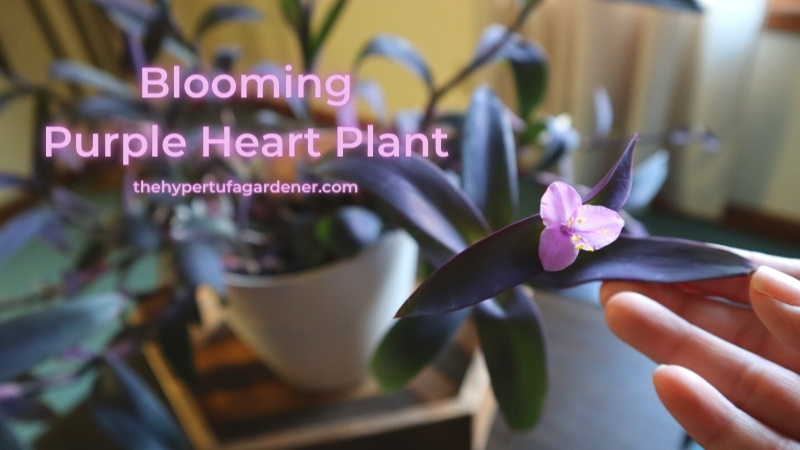Beautiful Houseplants: Purple Heart or Tradescantia Pallida
The Purple Heart or Tradescantia pallida is a gorgeous purple plant that you can grow easily inside your home as a houseplant or outside all year if you are in a no-frost or no-freeze zone.
Purple Heart is a lovely purple shade with deep pink flowers blooming at the branch ends, and when you keep pinching, you can have many branch ends.
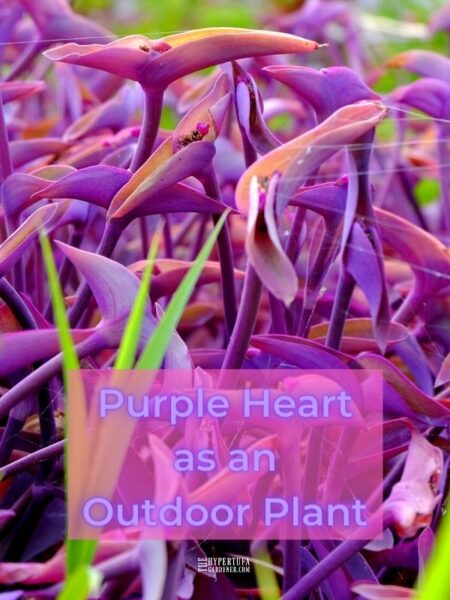
This particular Tradescantia pallida is great in a hanging basket or in a planter of some kind sitting on a table so that it can cascade downward. Pinching it can help it not get too leggy.
I had mine outside on my deck all this past summer and it grew down the side of the shelves. When I brought the Purple Heart plant inside, I ended up cutting off all the long strands, rooting some of them, because it fit nowhere! Too big!
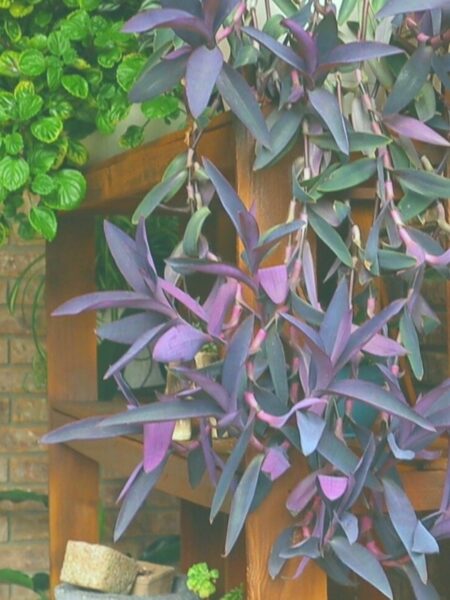
How To Propagate Purple Heart
Propagating Purple Heart plant is so easy, it almost goes without saying. I have never had any problem with water propagation of Purple Heart plant. When I trimmed the plant above, I just stuck the long stems into water and a week later, had roots for transplants ready to go. (Some were even blooming.)
Take a cutting anywhere on the stem but be sure to have at least one node (that “bump” in the stem) that will be in the water where you will be propagating or growing new roots.
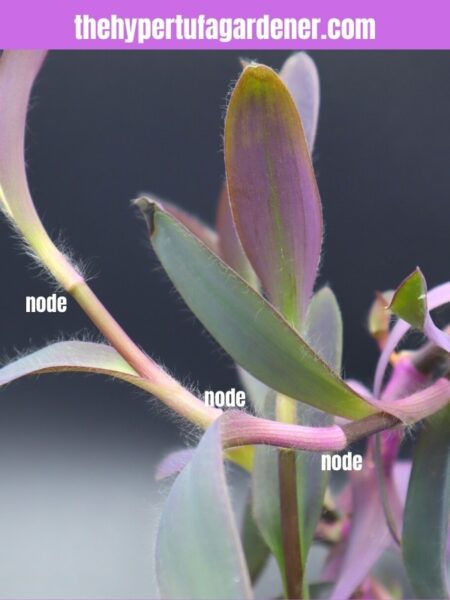
Propagating Purple Heart plant is easy whether it is done in water or just by pushing a stem into some loose well-draining soil. In my experience, it roots easily about 90% of the time. When grown outdoors in warmer zones, it can sometimes get invasive since it roots and spreads so easily.
My cutting originally came from Florida when we were on vacation in July of 2019. I carried it home in my handbag wrapped in a paper towel. It survived all that day and next morning when I remembered it, I put it in water.
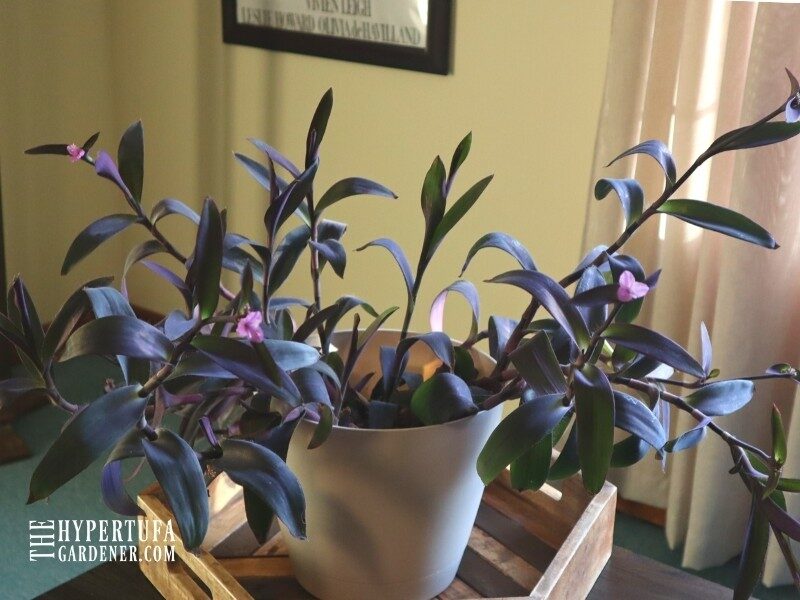
This plant is the result. See how easy!
As you see in the video, I have another plant in the same genus of Tradescantia, but it is the zebrina variety. This houseplant is more commonly called the Wandering Jew or Wandering Inch Plant. Both are so easy to propagate.
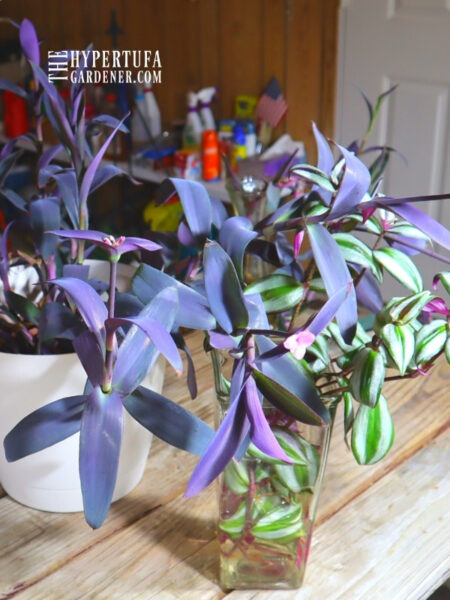
Is Purple Heart Plant A Succulent?
Yes, this plant is a semi-succulent type plant since it has thick fleshy stems which store water. However it does like soil to be moister than most ordinary succulents, but also needs to dry out in the first inch or so of soil before it is time to water again.
If you cut the stems, for instance when trimming to keep its nice bushy shape, you will notice they are hollow looking and very watery. Stems store and transport the water through the plant and these stems can hold a lot of water.
Bright light is best for the Tradescantia pallida to keep its beautiful purple color and to keep the plant bushy. The stems will be longer with more stem length between the nodes, therefore less leaves, if it is not getting enough light.
I have my largest Purple Heart Plant growing in the basement under grow lights. It is doing well and propagating nicely, along with its cousin, the Tradescantia zebrina. I really love that plant so much. It grows well in full sun on the deck in the summer.
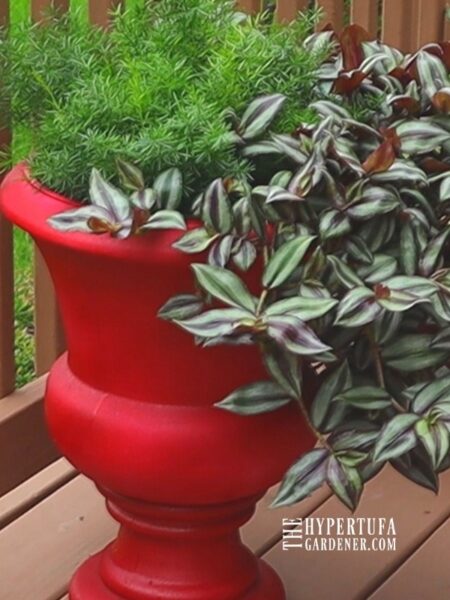
Why are there hairs on Purple Heart Plant?
As you can see in some of the images, the leaves and stems of the Tradescantia pallida are covered with downy hairs…and pretty long ones at that. These seem to be hairs as opposed to any kind of bristles or spines as on some other plants.
But what are these for? What purpose do they serve?
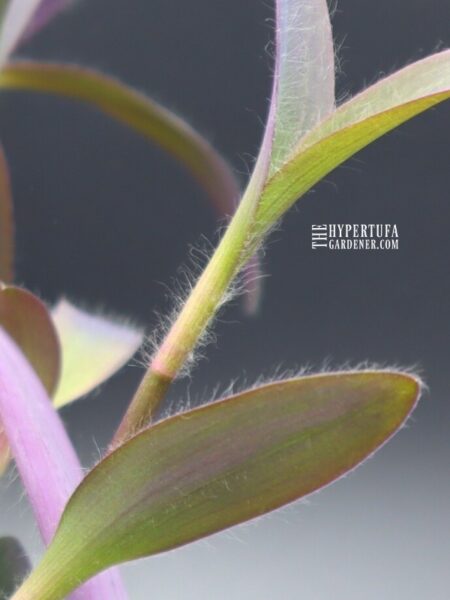
One reason that I find in researching this question is that it protects the plant from insects climbing upon and through the plant, laying eggs or eating the leaves etc.
The hairiness makes it harder for an insect to climb easily and subsequently to lay an egg, so it will move on to a smoother surface. That seems to make sense.
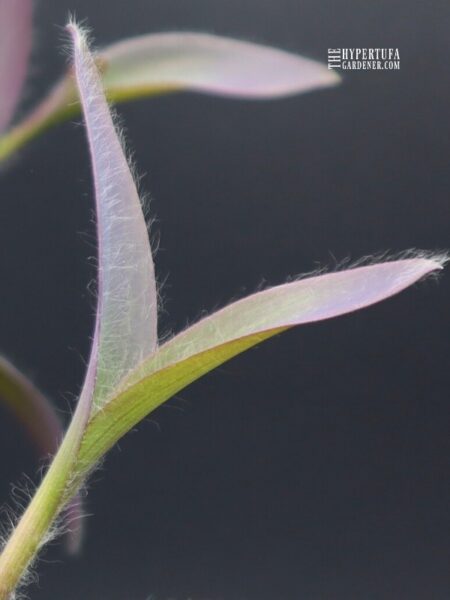
But the hairiness also comes into play for a plant to keep humidity closer to its surface. The plant hairs hold moisture close to the surface and keep it from drying out as easily.
Being a moisture-loving plant but also needing to dry out between watering, this method helps to retain any moisture in the air close to the plant. Seems really efficient to me.
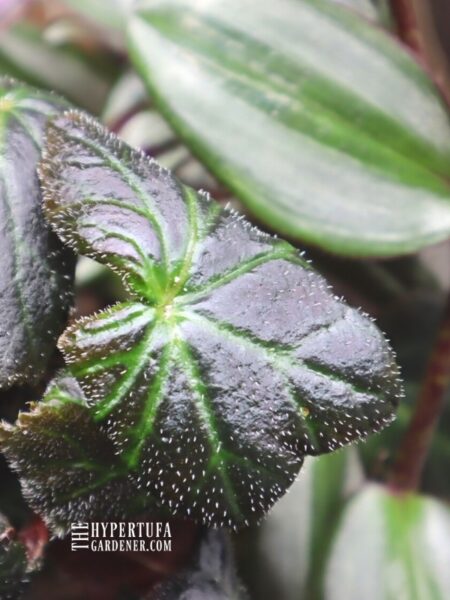
This is a begonia, the only one I have yet to grow. It seems to have “hairs” too, but they are more of a bristle-type deterrent to insects. See how difficult it seems to be to walk through this stubble to eat dinner!
And even more difficult to lay an egg, wouldn’t you think?
Great Plant for Sharing – Purple Heart Plant
If you find a friend who grows this plant, I am sure they will be glad to share a clipping. Since they are so easy to grow you can soon have a great plant to grow all year long, inside and outside.
Great statement plant too. Just keep it pinched for bushiness and lots of stems. Those stems are where the flowers come and there are many at each end. They just bloom again and again for your enjoyment.
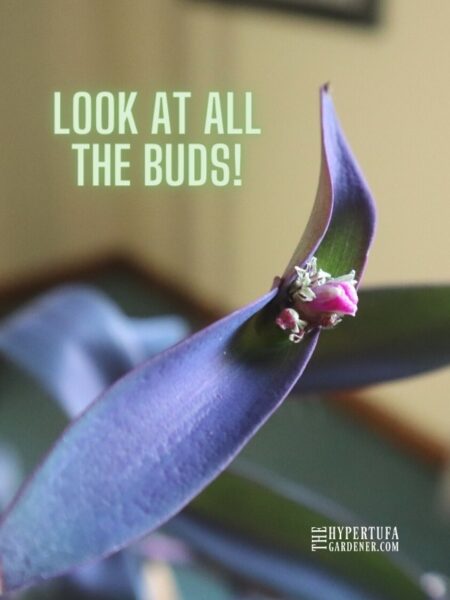
So Enjoy Easy Purple Heart Plant!


